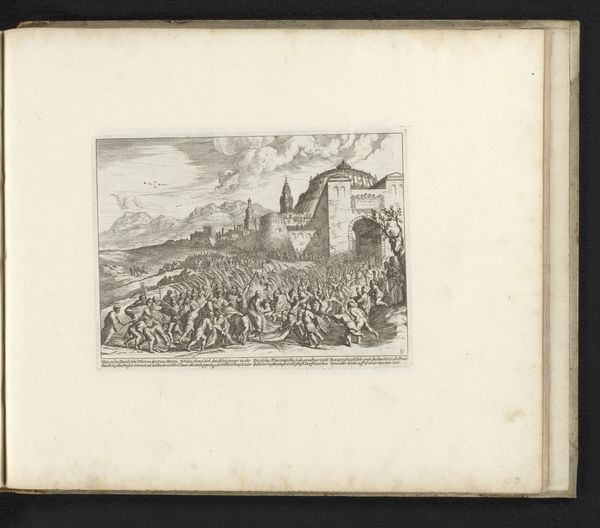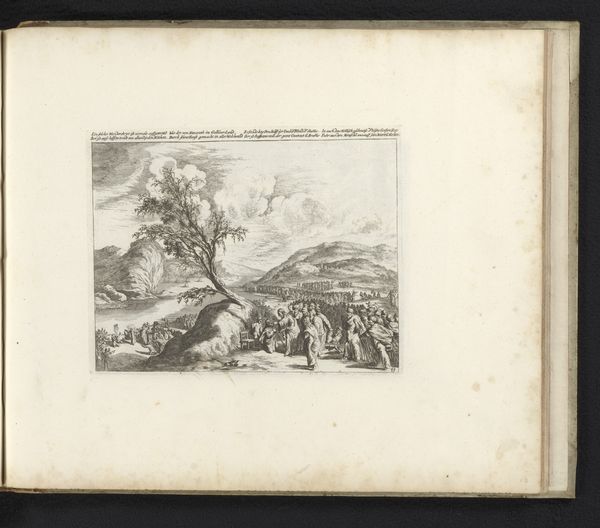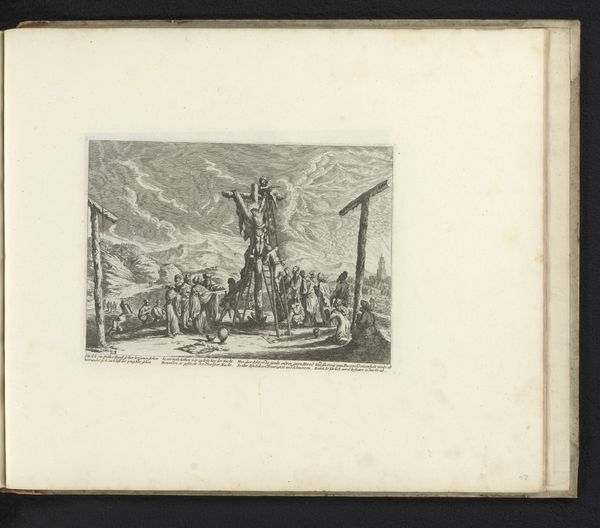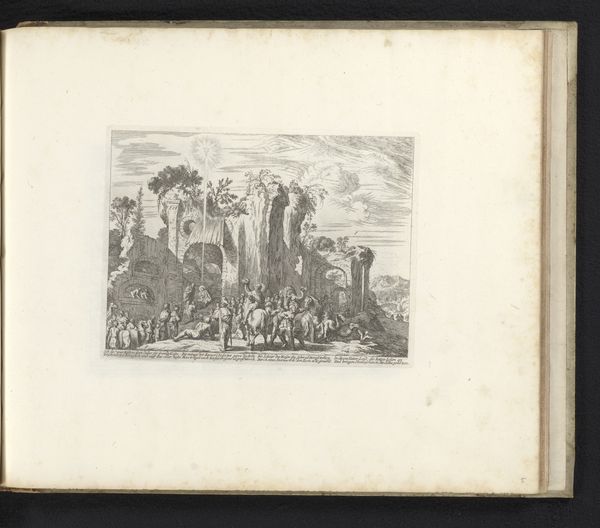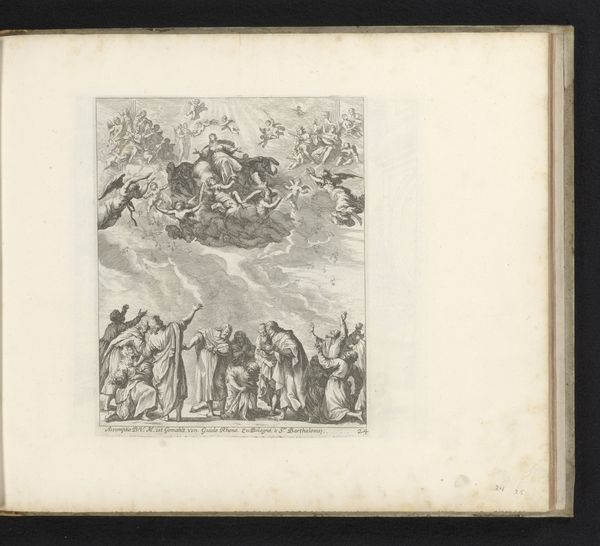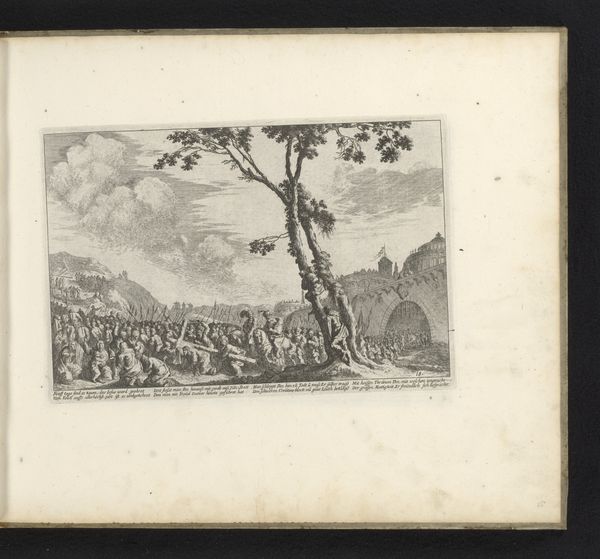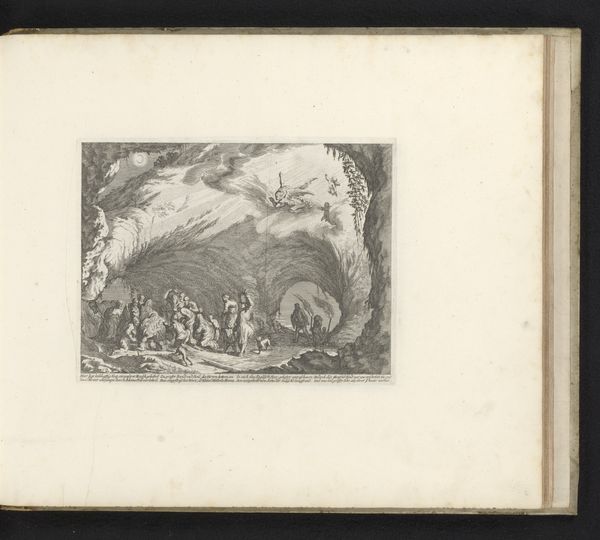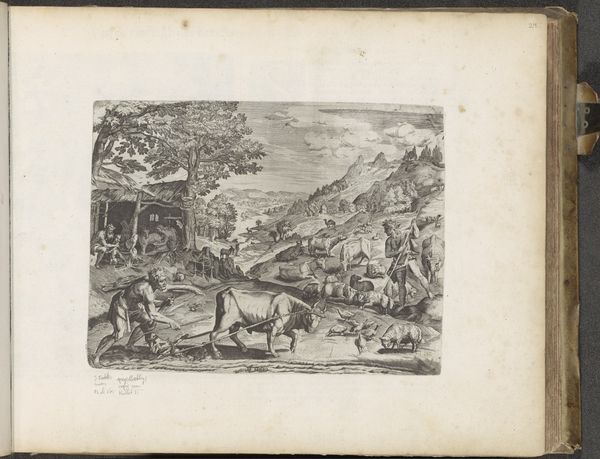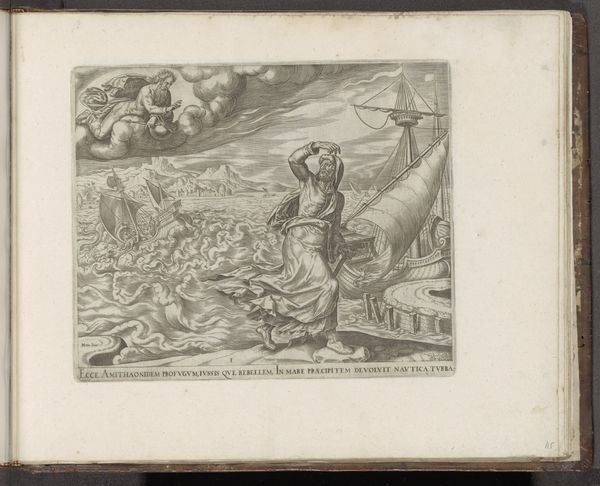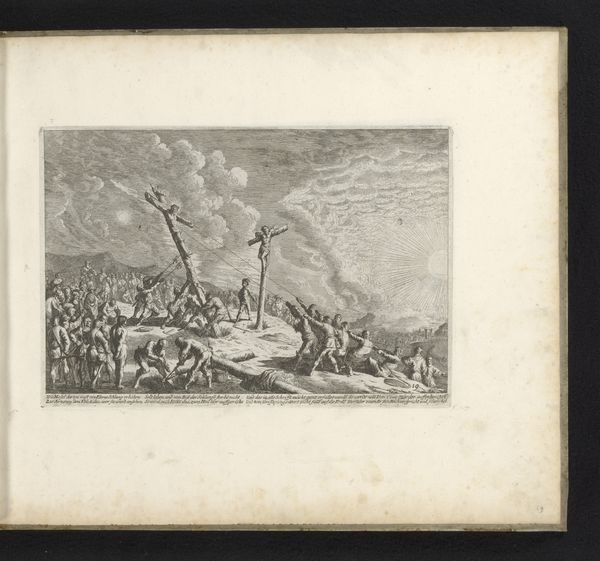
print, paper, ink, engraving
#
baroque
#
ink paper printed
# print
#
landscape
#
figuration
#
paper
#
ink
#
history-painting
#
engraving
Dimensions: height 160 mm, width 206 mm
Copyright: Rijks Museum: Open Domain
Curator: Looking at this print, my first impression is one of ascension, both literally and figuratively. The delicate lines of the engraving pull the eye upward, from the assembled crowd to the figure rising into the heavens. Editor: That's a great observation. This is "The Ascension of Christ," created between 1670 and 1682 by Melchior Küsel. It's an engraving, using ink on paper, housed here at the Rijksmuseum. The Baroque style really emphasizes that dramatic upward movement you mentioned. How might that speak to the piece's broader context? Curator: Well, it's fascinating to consider the cultural moment. Baroque art often served as a tool of the Counter-Reformation, and depictions like this one, Christ ascending, served to reinforce established religious hierarchies and power dynamics. The male figure at the center embodies traditional masculinity and divine authority. Editor: Exactly, and it's also important to think about how prints functioned in disseminating imagery and reinforcing those power structures across society. Prints allowed religious imagery to circulate beyond the elite, reaching wider audiences. Curator: And to see this scene rendered as landscape, instead of against gold leaf, signals a broader movement to situate faith within the natural, accessible world. Editor: Right, Küsel's artistic choices serve distinct social functions. The figures are carefully positioned and rendered to communicate specific messages. Who is included, and how are they arranged? It is vital that we explore power relationships between artist and audience. Curator: The artist's ability to capture such complex narratives using only ink and paper makes me reflect on what visual rhetoric is made available in that cultural landscape. It's fascinating how something that looks like it’s capturing the end of the story of Christ has the possibility of so many others. Editor: Agreed. This piece encourages us to look critically at the ways religious imagery has shaped and continues to shape our understanding of power, faith, and identity. It encourages us to re-imagine those visual relationships.
Comments
No comments
Be the first to comment and join the conversation on the ultimate creative platform.

